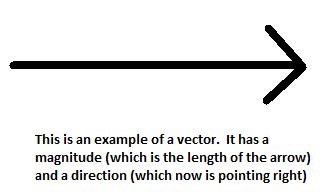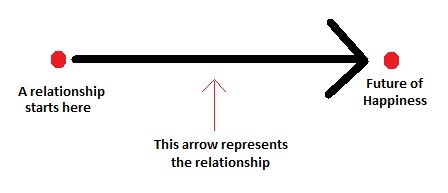Hello everyone, I am here today to talk about an important topic known as relationship physics. (I'm sorry that I didn't end up writing about "The Relationship Cycle" like I promised I would in my last note but it will come soon enough). So you may sometimes wonder, what are some of the fundamentals of relationships? Well, let me tell you.
In a relationship, there are 3 fundamental concepts (or factors) that determine the outcome of a relationship. Let's start with the first one: timing. Timing is very important in a relationship, especially in the beginning. Many people will say, "timing is everything." This is in fact very true. You may ask, "what does timing mean when it comes to a relationship?" Timing is a factor in a relationship that you have little or no control of at all. In its most basic term, it refers to the alignment of circumstances that allow two people to be together to start a relationship. An example of when timing is a big factor is when a boy really likes a girl, but the girl is already in a relationship OR that the girl has just gotten out of a serious relationship and had been hurt badly, thus not wanting to be in a relationship right away. This is an example of imperfect timing. Perfect timing is very hard to come by. But if things are meant to be between two people, the timing between them will be perfect. There are no specific examples to describe a relationship that occurred due to "perfect timing". You'll have to think of an example on your own. Just a little note that timing affects the beginning of a relationship greatly but does not necessarily mean that it won't affect the relationship during. Timing is rather more of a complicated concept because there are so many examples that can be affected by this fundamental factor.
The second fundamental concept that determines the outcome of a relationship is distance. The distance between two people is very important in determining the outcome of a relationship. However, unlike timing, distance can be controlled, though it can be difficult to control at times. As well, distance affects the relationship mostly during the relationship, rather than before, like timing. Of course, there are always exceptions, such that distance affects whether two people can even start the relationship. In that case, it is more of a timing issue. For example, if a couple had to separate because of career opportunities, then the relationship becomes a long distance one. Many people do not like the idea of long distance relationships because the physical being of the partner is not there. Girlfriends need boyfriends to cuddle, boyfriends need girlfriends for comforting (physical) and this is why many people disagree upon long distance relationships. However, if a couple lives close to one another or has access to each other's company easily, then distance is not an issue. Distance is an easier concept to grasp as opposed to timing. One thing to note is that distance is affected by timing and vice versa. They affect each other in ways that make a relationship become what it is.
With these two concepts being said, one may think back to the world of physics and how distance and time are related. According to 2D kinematics, distance over time is equal to speed. This is also true in relationships. According to the formula for speed:
s = d/t (Eq. 1)
where s is speed, d is distance, and t is time, it states that timing cannot equal 0 or else the universe will collapse. Equation 1 is perfect for describing the outcome of a relationship because the speed of the relationship is determined by the distance and timing of a couple. Distance cannot equal 0 UNLESS the couple is fused together as one. Otherwise, there is always some distance between a couple. If a couple is separated by ~20,000km (halfway around the earth), then to achieve optimal speed, the timing between the couple has to be much (much) greater. Timing is not really measured in numbers but measured by feeling. With that being said, the timing (otherwise known as feeling), must be very great; in other words, the couple must have had such a GREAT start that this "start" that they had will last them throughout the long distance. To take this even further, think about if a couple had perfect timing and they were always so close to each other (by close i mean they've reached the SECS stage in their relationship [don't understand what SECS is? read my previous note]) to the point that the speed becomes "too great" and the relationship will end quickly. This is when people say "you're moving too fast" or things are "moving too fast" in a relationship.
With ALL these things in mind, speed (not the third fundamental concept), distance, and time, let's move onto the final concept that determines the relationship. Many people would agree that the direction of a relationship is also very important, as this determines the relationship's future. If there is no direction in a relationship, then it will go nowhere and eventually come to its inevitable end. If there IS a direction in the relationship, then there is hope that the relationship will go the right way. There is also a chance that a relationship will go the wrong direction and head towards an inevitable end as well. How is direction related to all of these concepts, you may ask. Well, according to 2D kinematics, velocity is equal to distance over time (speed) with a direction. Makes sense so far, right? (If not, please let me know) To put this all together and make sense of it, let's use an example. Imagine a perfect couple, who met at perfect timing, can easily access each other's company and has planned a happy future together. This means that their relationship has an optimal speed (because of optimal distance and time) and an optimal direction, which allows them to reach a final destination (known as happiness). Let me explain something before I continue. Velocity is a vector. What is a vector you ask? Well, to be exact, a vector is a geometric entity containing a magnitude (speed) and direction. I'll show you an example using some figures:



Therefore, to sum up everything that I've explained in this note, the speed of a relationship is determined by distance and time. The direction of a relationship determines its future. All of the three concepts combined determine the outcome of a relationship. For sure, you can say that there are many things that can go wrong in a relationship that can cause it to end, whether it'd be because of any of these three fundamental concepts or some other unknown reasons, but this is true. This is why relationships are so hard to maintain and maintaining happiness is very difficult to do, ergo, it isn't for everyone. Anyway, please keep up with my note updates to read about other interesting facts regarding relationships!
Disclaimer - Everything written in this note is for entertainment purposes and should not be accepted as fact. If anything in this note offends you or something you believe in, please know that the intent of Relationship Physics was not to do that but only to give people some knowledge about relationships. Also, many people are probably asking what happiness is as seen in Figure 2 and 3. No one has ever proven that happiness ever existed and is merely only a theory that humans have developed to make themselves feel better about everything in life.
If you have any further questions or feedbacks, please leave a comment underneath.
P.S. If this note was too long, I'm not sorry for making you read the whole thing. If you didn't end up reading the whole thing and just scrolled down to the bottom to read the comments and just so happened to have read this message, then I suggest you to start reading from the beginning because everything in this note is very valuable knowledge. Thanks for your time.
 Tweet
Tweet